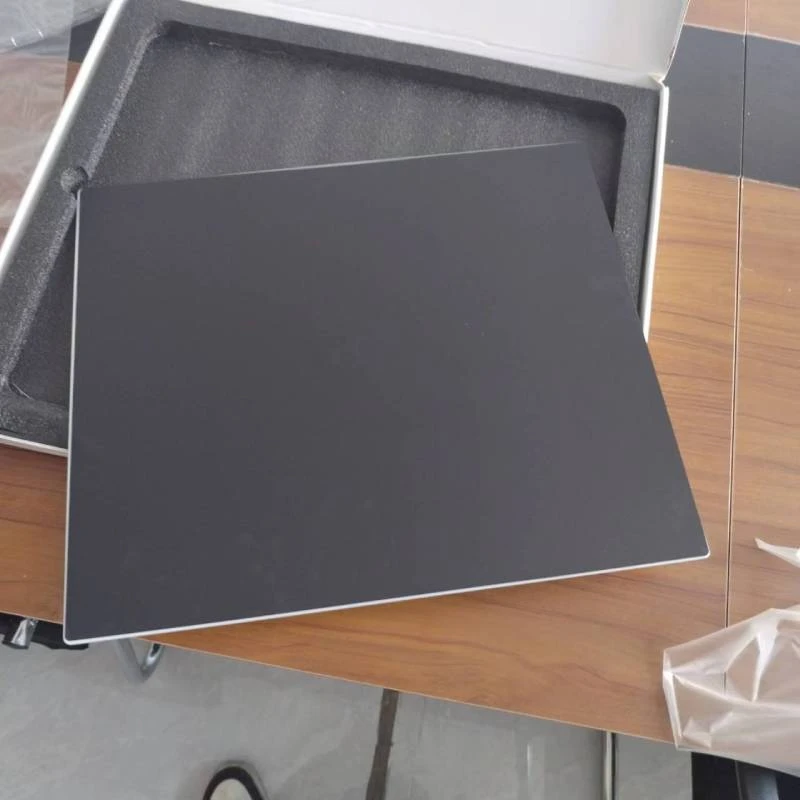The Fascinating World of One-Way Mirror Glass
One-way mirror glass, also known as two-way mirror glass, is a unique material that has captivated architects, designers, and psychologists alike. It appears as a standard mirror on one side while functioning like a window on the other, allowing light to penetrate from one side while reflecting it from the other. The science behind this intriguing glass is not only fascinating but also has numerous practical applications across various fields.
What Is One-Way Mirror Glass?
One-way mirror glass is made using a special coating process that applies a thin layer of metal to one side of a sheet of glass. This coating reflects light, creating a mirror effect on that side, while the other side remains transparent. For the glass to function properly, there needs to be a significant difference in light levels on each side. Typically, the side designed to be seen from—where the observer is intended to look out—must be brightly lit, while the opposite side stays dimmer. This differential in light allows the reflective property to dominate, creating the illusion of a simple mirror.
Applications in Various Fields
- Psychology and Behavioral Studies One of the most intriguing applications of one-way mirror glass is in the field of psychology. It is often used in observational research settings, such as therapy rooms and behavioral studies, allowing researchers or therapists to observe subjects without being seen. This unobtrusive observation is crucial for gathering accurate behavioral data, as it minimizes the influence of an observer’s presence on the subjects’ actions.
- Security and Surveillance One-way mirror glass is also prevalent in security installations. It is utilized in interrogation rooms, police stations, and security control rooms, where personnel need to observe suspects or monitor environments discreetly. The glass provides a means of ensuring safety and confidentiality, enabling security teams to analyze situations without alerting those under surveillance.
- Architecture and Design In the architectural realm, one-way mirror glass offers innovative design possibilities. It can create stunning effects in modern buildings, where architects use it to enhance privacy without compromising on natural light. For instance, office buildings often feature one-way mirror glass in conference rooms, allowing those inside to see out while preventing outsiders from peering in. Similarly, high-end residences sometimes use this glass in bathrooms or dressing areas, providing privacy in elegant spaces.
one way mirror glass
- Theater and Performance Art In the world of performance art, one-way mirrors can create immersive experiences for audiences. Artists can utilize these mirrors to blur the lines between performer and spectator, forcing viewers to question their own observations and assumptions. The reflective qualities serve as a metaphor for introspection and self-examination, enriching the thematic depth of the performance.
The Psychological Impact
The unique characteristics of one-way mirror glass can provoke varied psychological responses. For instance, it provides a sense of agency and control for the observers, who can watch without being seen. This can be empowering, but it can also raise ethical concerns about privacy and consent. In settings where subjects are being observed, participants may feel a sense of vulnerability if they are unaware of being watched, highlighting the need for ethical protocols in research and surveillance practices.
Challenges and Considerations
While one-way mirror glass has many benefits, it also poses challenges. The effectiveness of the glass relies heavily on lighting conditions, which can be inconsistent. If the light levels on each side are too similar, the glass may fail to function as intended, leaving observers exposed. Furthermore, ethical considerations must guide its use, especially in sensitive environments such as therapeutic settings or surveillance.
Conclusion
One-way mirror glass stands as a remarkable example of how the intersection of science, psychology, and design can lead to innovative solutions across many domains. Whether it is improving the efficacy of psychological research, enhancing security measures, or adding a layer of sophistication to architectural designs, this unique material continues to inspire creativity and provoke thought. As advancements in technology enhance our ability to manipulate light and transparency, we may find even more applications for one-way mirror glass in the future, expanding its role in our everyday lives.
 Afrikaans
Afrikaans  Albanian
Albanian  Amharic
Amharic  Arabic
Arabic  Armenian
Armenian  Azerbaijani
Azerbaijani  Basque
Basque  Belarusian
Belarusian  Bengali
Bengali  Bosnian
Bosnian  Bulgarian
Bulgarian  Catalan
Catalan  Cebuano
Cebuano  Corsican
Corsican  Croatian
Croatian  Czech
Czech  Danish
Danish  Dutch
Dutch  English
English  Esperanto
Esperanto  Estonian
Estonian  Finnish
Finnish  French
French  Frisian
Frisian  Galician
Galician  Georgian
Georgian  German
German  Greek
Greek  Gujarati
Gujarati  Haitian Creole
Haitian Creole  hausa
hausa  hawaiian
hawaiian  Hebrew
Hebrew  Hindi
Hindi  Miao
Miao  Hungarian
Hungarian  Icelandic
Icelandic  igbo
igbo  Indonesian
Indonesian  irish
irish  Italian
Italian  Japanese
Japanese  Javanese
Javanese  Kannada
Kannada  kazakh
kazakh  Khmer
Khmer  Rwandese
Rwandese  Korean
Korean  Kurdish
Kurdish  Kyrgyz
Kyrgyz  Lao
Lao  Latin
Latin  Latvian
Latvian  Lithuanian
Lithuanian  Luxembourgish
Luxembourgish  Macedonian
Macedonian  Malgashi
Malgashi  Malay
Malay  Malayalam
Malayalam  Maltese
Maltese  Maori
Maori  Marathi
Marathi  Mongolian
Mongolian  Myanmar
Myanmar  Nepali
Nepali  Norwegian
Norwegian  Norwegian
Norwegian  Occitan
Occitan  Pashto
Pashto  Persian
Persian  Polish
Polish  Portuguese
Portuguese  Punjabi
Punjabi  Romanian
Romanian  Russian
Russian  Samoan
Samoan  Scottish Gaelic
Scottish Gaelic  Serbian
Serbian  Sesotho
Sesotho  Shona
Shona  Sindhi
Sindhi  Sinhala
Sinhala  Slovak
Slovak  Slovenian
Slovenian  Somali
Somali  Spanish
Spanish  Sundanese
Sundanese  Swahili
Swahili  Swedish
Swedish  Tagalog
Tagalog  Tajik
Tajik  Tamil
Tamil  Tatar
Tatar  Telugu
Telugu  Thai
Thai  Turkish
Turkish  Turkmen
Turkmen  Ukrainian
Ukrainian  Urdu
Urdu  Uighur
Uighur  Uzbek
Uzbek  Vietnamese
Vietnamese  Welsh
Welsh  Bantu
Bantu  Yiddish
Yiddish  Yoruba
Yoruba  Zulu
Zulu 

